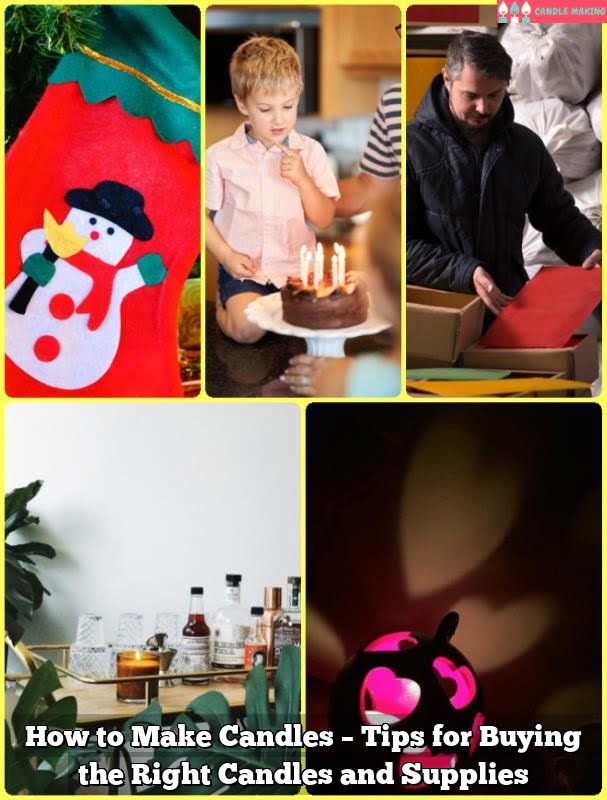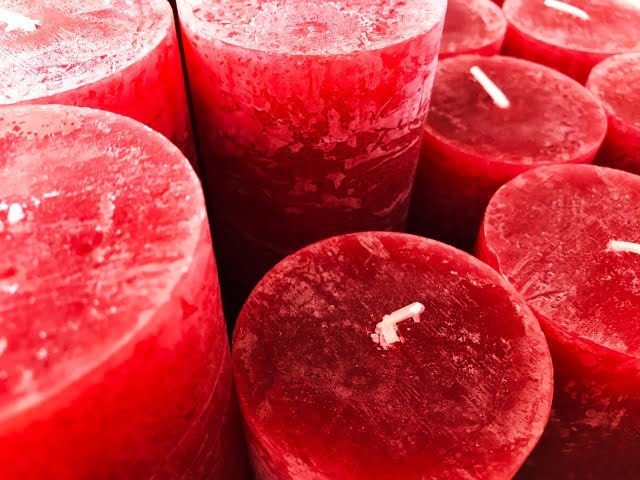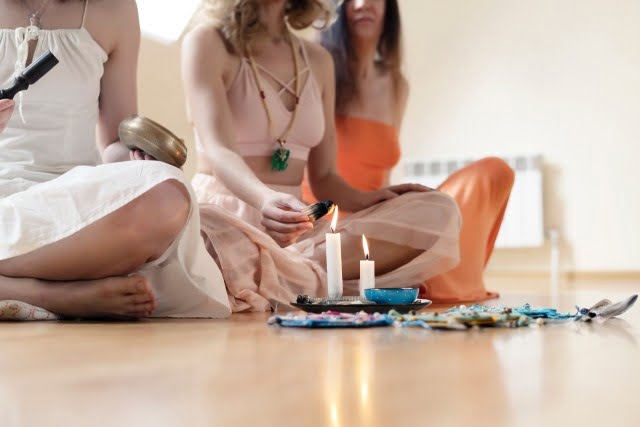Introduction
Candle making is an enjoyable and creative craft that can produce stunning finished products. Making your own candles unlocks the opportunity to bring unique ideas to life and learn a new skill. Candles can be used in a variety of settings, from home décor, to art projects, and even as thoughtful gifts.
Here are some tips for those beginning their journey into the world of candle making:
1. Gather Supplies: Before you start your project, assemble all of the supplies you will need for your specific design. For most candle projects, this includes wax, wicks, molds (or other container for poured candles), melting pot or double boiler, thermometer or heat gun, wax coloring and scents/oils if desired.
2. Prepare Your Supplies & Area: Prior to getting started with pouring/creating your candle design, place newspaper or protective covering on any surfaces within reach for quicker clean up when complete. Have all relevant measurements written down (wax weight/amount needed) and available so you’ll know what step is coming next before needing to stop mid-way through!
3. Melt Wax & Add Coloring & Oils: In order to create a successful candle product, it is important to melt your wax using either a pot/double boiler or melting station. Slowly heat up until wax melts completely then use temperature gun/thermometer to measure temperature throughout process; also make sure to add color drops and essential oil drops as desired (do NOT measure oils by adding ‘eye ball’ drops).
4. Pour into Mold: Once wax has cooled slightly but still remains in liquid state (at appropriate temperature) carefully pour into prepped mold or container – ensure the wick remains straight during entire process! When pouring from double boiler it’s best practice to use a ladle so pours aren’t too deep per movement; also if pour appears air bubbles try adding warmth back without reaching boiling level again in order soften top layer so more scent oil can be added if desired – never wait longer than two hours between stands when adding colorants between starting point stand & completion stand!
5Wrap & Trim Wick: After pouring liquid wax fully cools down but not yet set allow 1-2 days before trimming wick and wrapping candles in tissue paper for storage purposes (do not place near anything flammable as there could be slight breathing sticks). A length of 1/4 inch is ideal for single-wick designs; multiple wicks are usually cut lower than ¼-inch length depending upon size discrepancy between each side’s flame size when burning together simultaneously!
Choosing the Right Wax
When it comes to making candles, the type of wax chosen will ultimately determine the quality and aesthetic of your final product. There are several different types of wax available, each with its own unique benefits and drawbacks.
Paraffin wax is one of the most popular options for candle-making because it is easy to work with, offers a great scent-carrying capacity, and is relatively affordable. It has a slower burning rate than other waxes, however it can cause soot build-up in areas where it is used frequently.
Soy wax is quickly becoming a favorite among many avid candle makers due primarily to its sustainable production and natural ingredients. Additionally, soy burns slightly cleaner than paraffin with hardly any soot being generated during its use. It typically has a lower melting point than paraffin which may result in poor performance when poured into certain containers or molded forms.
Beeswax has long been used for candle-making because of its unique colors and scents that are naturally produced from unbleached beeswax. It also features a higher melting point which allows for pillar candles to hold their shape better over time; however even when blended with other types of waxes it can easily be melted at too high a temperature resulting in an unhealthy smoke release upon lighting.
Finally, palm wax is derived from renewable palm oil sources and offers an exotic look thanks to its bright colors and crystal formation known as “feathering” created when poured into molds while still hot. This characteristic makes palm wax best suited to larger candle sizes since smaller sizes do not allow the crystals enough room to form properly without melting into each other instead.
Preparing Your Supplies
Making candles is an enjoyable activity that can help you create beautiful, handmade pieces of art. Before beginning this process however, there are a few supplies that you will need before getting started.
Basic Candle Making Supplies:
– Wax: This includes paraffin wax, beeswax, and soy wax among others. You’ll want to choose your wax based on the type of candle you want to make.
– Wicks: You can use pre-tabbed wicks with a base that needs to be secured into the bottom of the container or purchased in coils for a DIY version. The size of wick you’ll need will depend on the amount of wax used so select one accordingly.
– Containers/Molds: This can include anything from tins and jars to molds made out of silicone, depending on what type of candle you’re making.
– Dyes, fragrance oils/essential oils (optional): If desired, you may use these products to enhance your candles’ appearance and scent respectively.
– Double boiler (for melting wax) and thermometer: This enables precise temperatures when melting wax which is essential for candle making success.
Sources For Buying Materials:
For Wax – Many local craft stores sell a variety of differently shaped blocks, including large blocks with different fragrances added already mixed in. For example; Micheal’s & Joanns has great selections online as well as in store locations. Additionally many online websites such as Crafty Candles has numerous options including high quality Fragrance Oils as well as specialized dyes for any candle project needs one may have!
Wicks – Candlewic offers an extensive range of pre-tabbed cotton or paper core wicking in various sizes as well as soy or beeswax based varieties with helpful charts depending on what kind of containers one wants to use for their candles! They also carry the necessary additives such as sustainers and primers that assist in heightening the burning time & stability for all sorts if candles!
Containers/ Molds – Depending on what type of project one is planning there are lots of great places online like Candlesnsuch that not only provide all sorts molds but also offer helpful tutorials with advice on how best to create specific types of candles!
Making the Candles
Making candles can be a fun and relaxing craft to do in your free time. With the right materials and instructions, you can easily make beautiful candles that you and your friends will enjoy.
Start by deciding what type of candle you would like to make. Different types of wax, such as beeswax or paraffin, require different melting temperatures and will result in a different look for the finished product. Additionally, consider the shape of the mold you will use for pouring the liquid wax. Choosing an interesting shape, such as a cylinder or a diamond, can add an element of uniqueness to your candle-making project. Once you’ve decided on these details, it’s time to start gathering supplies.
Gather all necessary supplies together including wax (enough for at least 3-4 batches), wicks, metal molds or cups to hold the wax while it melts, thermometer for measuring the temperature of melted wax, scents (if desired), dyes or crayons pieces to color your candles (optional), paper towels and sponges for wiping up any spills/drips along with safety gear such as heat-resistant gloves, safety goggles and an apron.
Next, melt the wax over low heat in either a double boiler or an electric melter (these are available at most craft stores). Be sure to supervise when working with hot materials! Keep track of temperature with a thermometer — melting point varies depending on type of wax — until entire block is melted; stir occasionally during this process.
Once melted remove from heat source and mix in fragrances/dyes if preferred; allow them to dissolve into liquid before pouring into molds. Give mold several minutes to cool then give it several taps on hard surface so that any tiny bubbles created from mixing move towards top allowing for even coating throughout pour once cooled down enough not to evaporate fragrance molecules completely (or discolour dye). Last step is assembly: use wick tab provided on wick itself & adhere it across inside top portion of chosen metal form/cup ensuring bottom portion lies flat against bottom surface where desired design should appear — when cooled completely trim excess length off corner using scissors or flame lighter–Voilà! You have completed your very own handmade creation!
Establishing Your Scent
Establishing your scent is one of the most important aspects of making your own candles. Essential oils are one of the best and most natural ways to ensure a pleasant aroma in your candles, as they come from natural sources such as fruits, leaves, flowers, and other plants. Examples of popular essential oils for candle scents include lavender, eucalyptus, orange, rosemary, peppermint, sandalwood, and jasmine.
When creating a candle with essential oils for scent you will need to choose an appropriate method of incorporating it into your mixture. Depending on the type of wax you have chosen to use some may perform better than others – Soy wax has proven to be especially versatile when blending with Essential Oils. One method to introduce the fragrance is to melt down your wax before adding in delicately measured drops (in parts per million) until reaching the desired strength of intensity. The other option is adding in essential oils post-pouring once the wax has formed a solid layer which can retain more fragrance; however this does require careful monitoring due to potential overheating or evaporation during this step. Lastly you could consider introducing a professional grade fragrance pre-poured giving more consistent results and ease when developing multiple scents without mixing them together during bottling stages.
Finishing Touches
Once you have poured your wax into your molds and allowed it to set, the final step when making candles is to finish them with a unique flare. Finishing techniques such as decorating the top of the candle with a favorite item, such as a seashell from a recent trip or even an old jewelry piece can create a truly special touch. Additionally, there are specially designed products available which will allow you to explore various colors, scents, and textures that can be used to customize your candles even further. Glitter and dust additives can give candles a special sparkle while fragrances like lavender and jasmine provide an aroma that instantly puts people in a relaxed state. In addition to these decorative steps, finishing touches like tying a personalized ribbon around each candle can help create an unforgettable memory for friends and family members who receive these special items as gifts. Get creative when making candles by using all of the different items available on the market today to make sure yours stand out from the rest!
Troubleshooting
Troubleshooting Common Issues and Solutions:
• Wax Not Melting – If your wax isn’t melting properly, you may be melting it too quickly. Try adjusting the temperature to a lower setting and allowing it to heat for longer periods of time.
• Smoky Flames – This is caused by not following directions correctly or by having unbalanced amounts of oil, wax, and scent in the blend. Make sure that you are following exact measurements when creating your candles.
• Frosting/White Blotches on Top Layer – This occurs when there are too many air bubbles that are released while pouring your candle. To avoid this issue, pour the wax slowly and evenly into the vessels.
• Discolored Candles – Discoloration is caused due to improper temperatures during pouring or curing the candles. Follow the instructions provided carefully to ensure that the right temperatures are being used for pouring and curing respectively—this will guarantee a perfect color every time!
Common Safety Concerns:
Soy wax is flammable, as with any candle material, so always use caution when lighting candles or near an open flame. Never leave burning candles unattended or in reach of children or animals. Be sure to keep wicks trimmed down to ¼ inch (6 mm) before lighting them and extinguish them once they reach their desired size if they flame up too high. Always consult usage instructions before handling any special dyes as some of them can cause staining if spilled on fabrics or surfaces.
Conclusion
Making candles can be a fun and rewarding experience that anyone can try. The first step is to decide what type of wax you will use, as there are many different waxes available on the market. Next, you need to determine your wick size and length. Be sure to keep safety in mind when cutting and measuring your wick. Once your materials have been chosen and collected, you can begin the candle making process by melting the wax at a low temperature until it reaches its desired consistency, then adding dye or scent if desired. Now all that remains is to pour the melted wax into a mold or jar, carefully insert the wick, and let it cool before trimming the wick.
When working with candles, read labels for all supplies being used to ensure safe handling of materials. Additionally, combustible items such as flammable liquids should not be stored near open flames created during candlemaking..
These tips for making candles provide an overview of how to create unique projects from start to finish. There are countless ways that candles can be customized; from various displays such as potpourri-scented jars in a preferred color scheme to personalized messages with characters written in wax onto a wall hanging candle –the possibilities are endless! With some knowledge and experimenting, anyone has the ability to make beautiful and practical gifts out of candle-making projects.

Welcome to my candle making blog! In this blog, I will be sharing my tips and tricks for making candles. I will also be sharing some of my favorite recipes.





